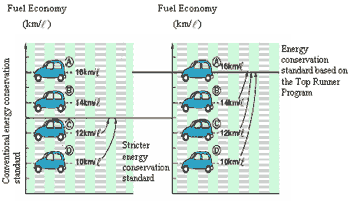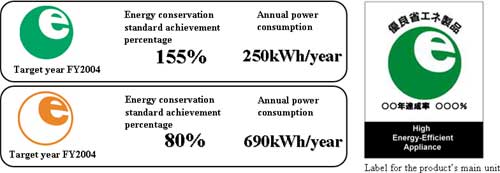II-2. Energy
Conservation Measures for the Commercial/Residential
Sector
Improving Equipment Efficiency with the Top Runner Program
Improving Equipment Efficiency with the Top Runner Program
| - The top runner program* was introduced in 1998 for energy conservation standards for home/office appliances and fuel economy standard for automotives. |


